Dinosaurs are majestic creatures that once roamed the earth. While we’re still pretty curious about what it was like to walk around with those creatures around us, many are still thankful that the dinosaurs have long been extinct. Can you imagine having to worry about being eaten by large carnivores on a regular basis?
While some dinosaurs are harmless, others prefer eating live prey. Apart from having the bite and the power to take down basically any prey they want, some carnivorous dinosaur species are hunkering beasts that will make elephants look small by today’s standards. Here are the 8 largest carnivorous dinosaurs you should check out.
-
Saurophaganax
Time Period: Jurassic
Other Name: Lord of Lizard Eaters
Habitat: North America
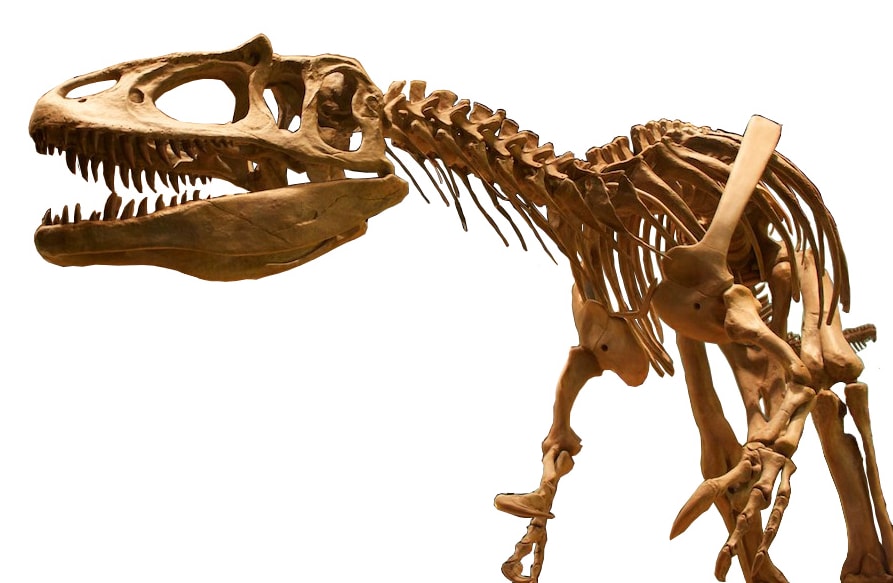 Source: commons.wikimedia.org
Source: commons.wikimedia.org
The Saurophaganax is far from being the largest carnivorous dinosaur. However, it was the largest terrestrial dinosaur from the late Jurassic period. That said, it was one of the apex predators at the time, which earned it the nickname “lord of lizard eaters.”
This refers to its diet of eating small dinosaurs and other creatures which were considered dangerous on their own.
The remains of the Saurophaganax were discovered in 1931 and 1932 by John Willis Stovall. They were found in Cimarron County, Oklahoma. The exact genus of the Saurophaganax remains to be debated today as it features distinct characteristics that could be found in various dinosaur families.
Did You Know
Due to its size, the population of the Saurophaganax remained to be small because they needed more food. As that is the case, they didn’t breed much to keep the supply apt.
-
Oxalaia
Time Period: Cretaceous
Other Name: None
Habitat: North America, Africa
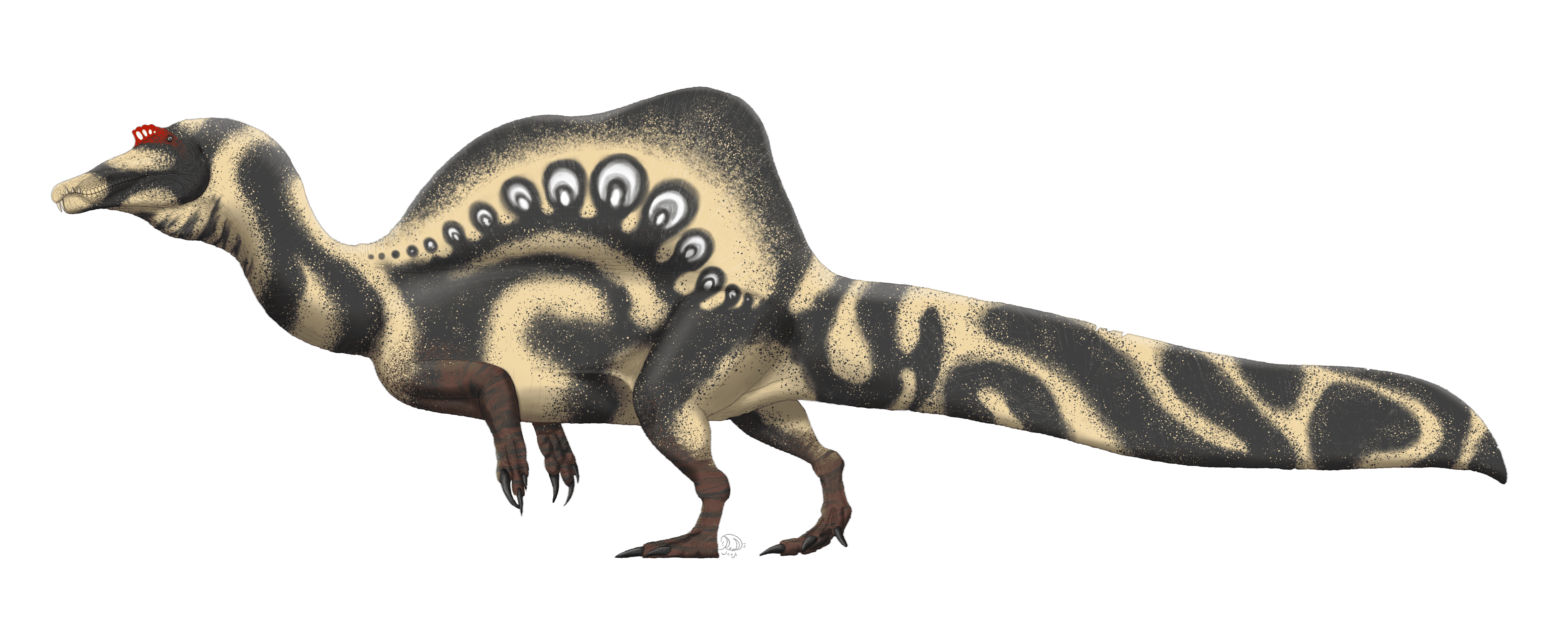 Source: commons.wikimedia.org
Source: commons.wikimedia.org
The Oxalaia has a few distinct features that we can compare to modern crocodiles. That being its elongated jaw which featured sharp rows of teeth. Its teeth and cranium features are distinct in the sense that no other creature from its period had the same characteristics.
There are also traits in the Oxalaia’s skull that indicate that it’s partially piscivorous, which is not surprising as it lived near bodies of water.
The remains of this dinosaur were only described back in 2011 by paleontologists Alexander Keller and his colleagues. They named the Oxalaia on Brazilian quilombo settlements, wherein the fossils were discovered.
Did You Know
The Oxalaia is known from only two pieces of fossil. The rest of its biology was derived from its relative dinosaurs.
-
Carcharodontosaurus
Time Period: Cretaceous
Other Name: Sharp-Toothed Lizard
Habitat: Africa
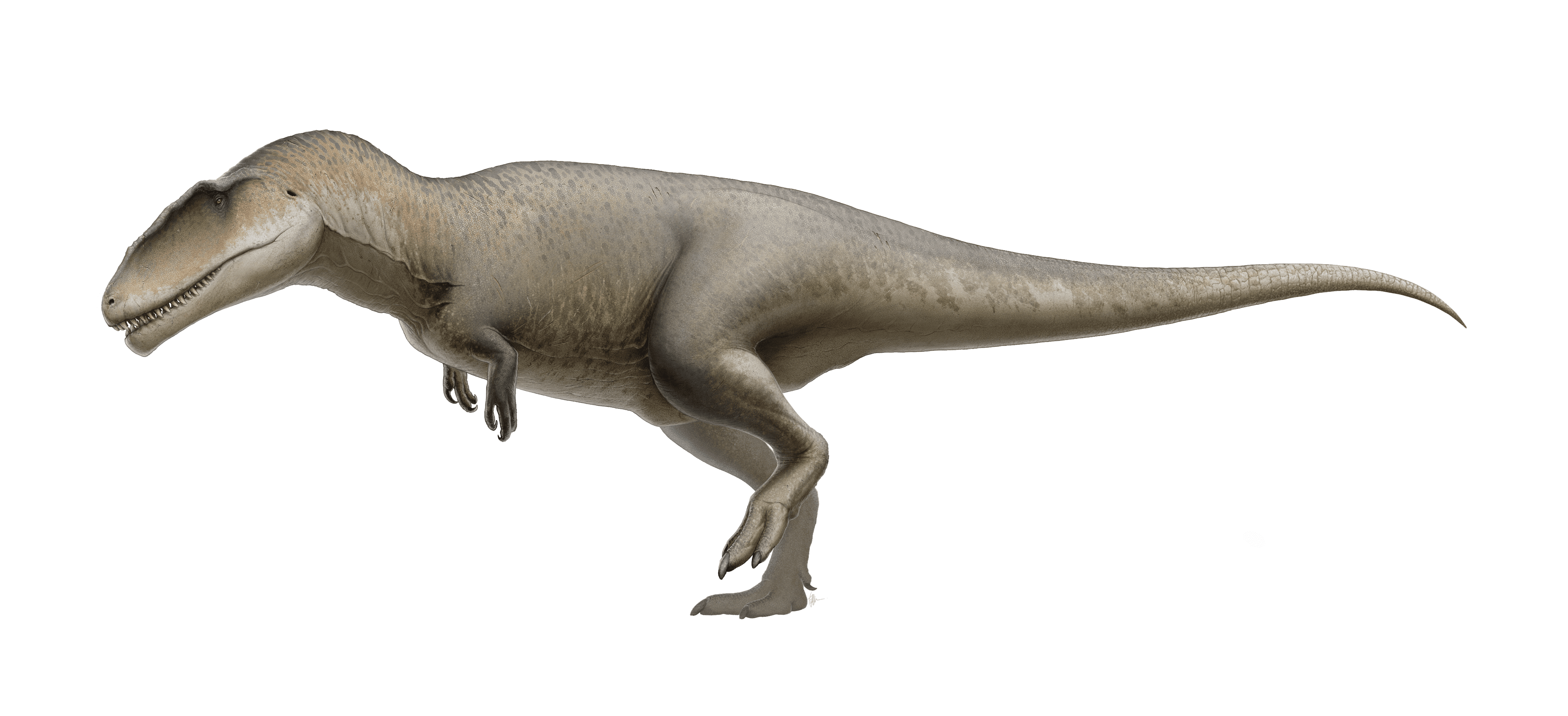 Source: commons.wikimedia.org
Source: commons.wikimedia.org
The name Carcharodontosaurus is a mouthful, but this dinosaur rightfully deserves its name. Its name directly translates to “sharp-toothed lizard.” While the dinosaurs on this list have very sharp teeth indeed, the Carcharodontosaurus features a larger set of teeth which it effectively uses to hunt for its prey.
The teeth of the Carcharodontosaurus grew up to eight inches. Aside from the massive size of the teeth, these were also serrated, meaning that if a large prey is bitten, getting off the jaws would be hard and quite painful.
Despite not being as large as other dinosaurs on this list, the Carcharodontosaurus is still very dangerous on its own accord.
Did You Know
The Carcharodontosaurus can grow a total of 32 teeth, and it can bite with a force of 3,000 lbs!
-
Giganotosaurus
Time Period: Cretaceous
Other Name: Giant Southern Lizard
Habitat: Argentina
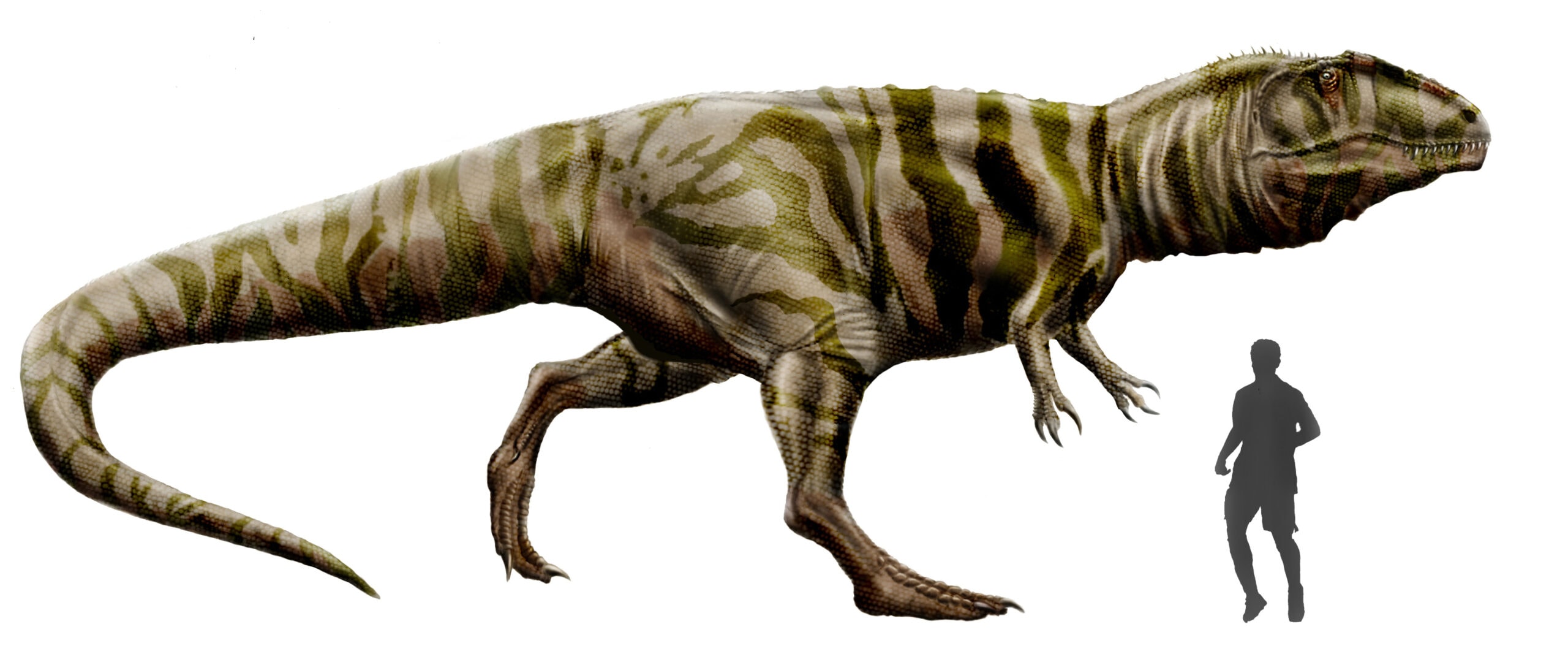 Source: commons.wikimedia.org
Source: commons.wikimedia.org
With a name like Giganotosaurus, you should definitely expect a large dinosaur. Also called the Giant Southern Lizard, the Giganotosaurus closely resembles the T.rex.
In fact, it’s often been confused with the king of the tyrant lizards as well. The key biological difference that the Gigantosaurus had was that its skull was low and that it had a ridge-like crest in front of its eye.
The Giganotosaurus is one of the most completely known members of the Carcharodontosauridae family. These are gigantic theropods that roamed the earth millions of years ago. The Giganotosaurus is said to be homeothermic, which means it has a metabolism that’s between a mammal and a reptile. This enabled fast growth, which was attributed to its massive size.
Did You Know
The Giganotosaurus is the apex predator of its ecosystem. It was so large many believed that it had fed on young sauropod dinosaurs.
-
Sigilmassasaurus
Time Period: Cretaceous
Other Name: None
Habitat: North Africa
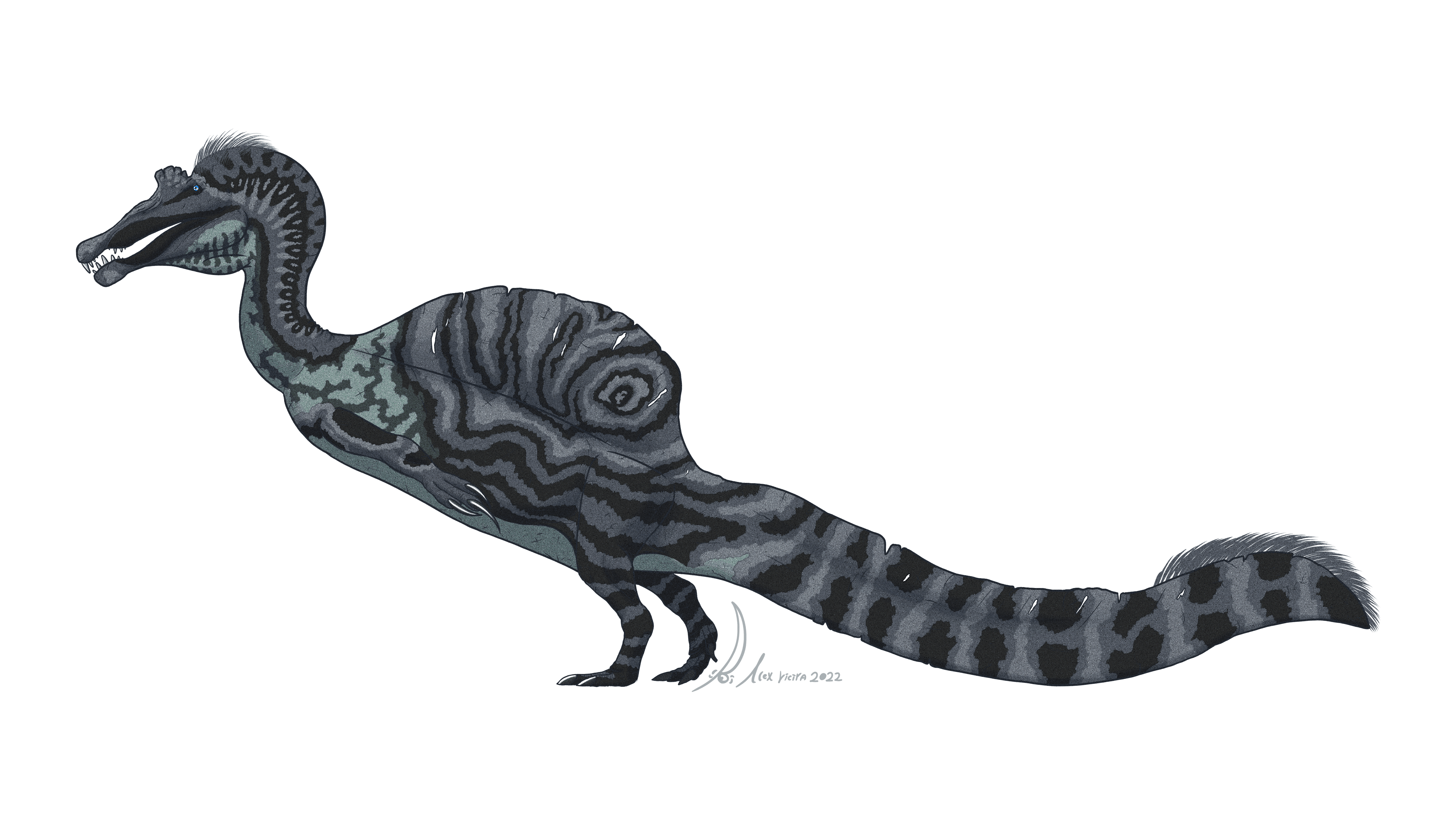 Source: commons.wikimedia.org
Source: commons.wikimedia.org
The first fossils of the Sigilmassasaurus were found in 1996 by paleontologist Dale Russell. One of the distinct features of the Sigilmassasaurus was its long tail which can be just as long if not longer than its body.
As per research, the dinosaur also had strong neck muscles, which it used to snatch fish out of water swiftly.
The identity of the Sigilmassasaurus has long been debated because many scientists believe that its discovered fossils are close to the Spinosaurus. Research also suggests that the Sigilmassasaurus had semi-aquatic habits and a partially piscivorous diet as well.
Did You Know
The Sigilmassasaurus had a crocodile-shaped beak with a set of sharp fangs. It uses this to snatch and end the lives of its prey.
-
Epanterias
Time Period: Jurassic
Other Name: None
Habitat: North America
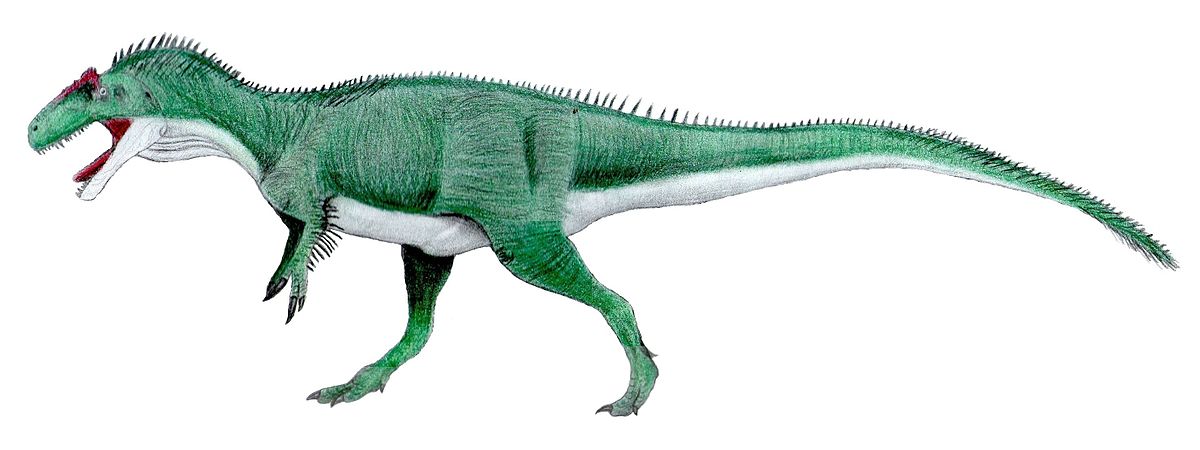 Source: commons.wikimedia.org
Source: commons.wikimedia.org
Not much is known about the Epanterias just yet. In fact, many scientists aren’t sure about whether or not it’s a specie in itself or just a sub-species of an Allosaurus. That’s because scientists have yet to find a complete set of fossils for the Epanterias all in one place. Even still, many believe that it is one of the largest carnivores to have roamed the land.
Most of the specimens of the Epanterias were found in separate locations. Scientists believed that it was a part of another Allosaurus, but the mystery was that the fossils were far from what would’ve been considered as the Allosaurus at the time. Till now, it remains a mystery as to whether or not this creature did exist.
Did You Know
In Latin, the scientific name of the Epanterias translates to clasping buttressed vertebrae. This perfectly describes the characteristics of the previously discovered Epanterias fossils.
-
Tyrannosaurus Rex
Time Period: Cretaceous
Other Name: T.rex
Habitat: North America, Asia
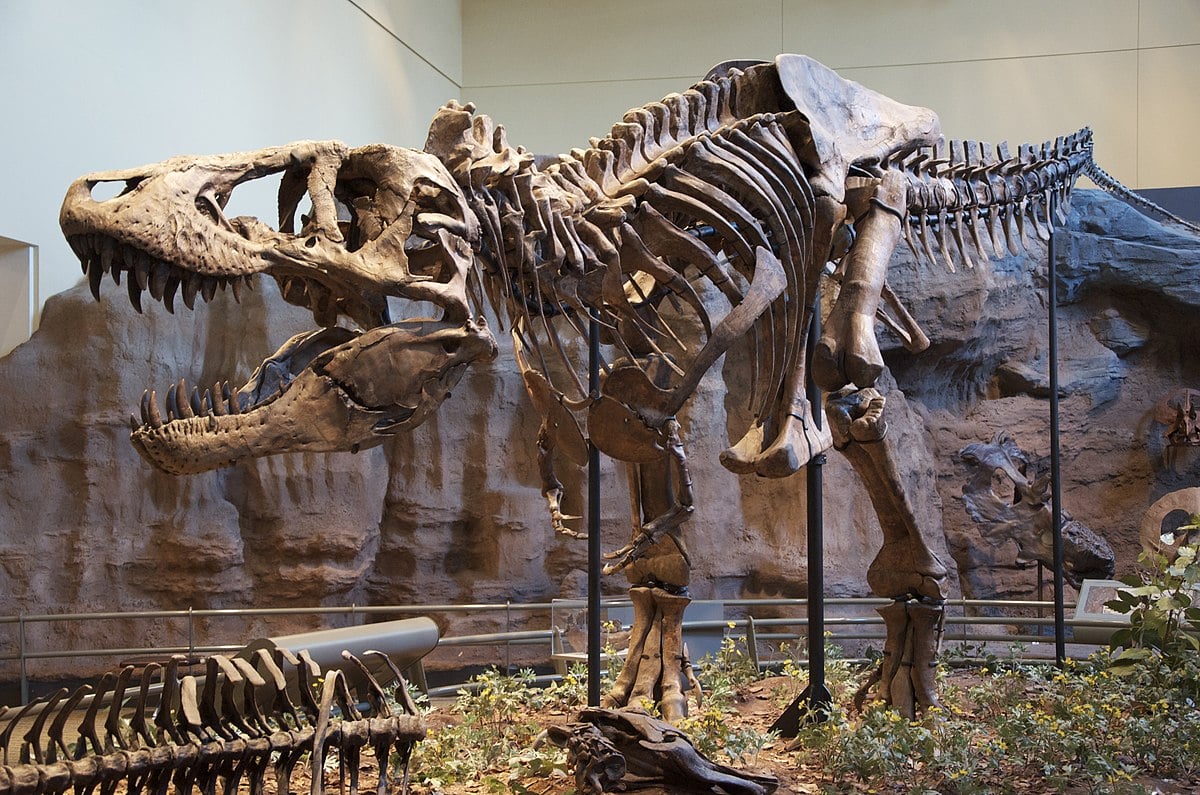 Source: commons.wikimedia.org
Source: commons.wikimedia.org
Believe it or now, the Tyrannosaurus Rex or better known as the T.Rex, isn’t the largest carnivorous dinosaur out there. However, it is one of the deadliest because of its speed and its massive jaws. It’s probably the most popular dinosaur in pop culture as well, with films like Jurassic Park and many others using it for thrills.
The T.Rex is distinguishable by its large skull and heavy tail. It’s one of the most feared dinosaurs out there, and it was an apex predator during its time. We’re lucky that the T.Rex is extinct right now because we wouldn’t even know how to deal with this dinosaur if it were walking the earth today.
Did You Know
The name Tyrannosaurus Rex literally translates to “king of the tyrant lizards.” A fitting name for a dinosaur that was built to rule the land.
-
Spinosaurus
Time Period: Cretaceous
Other Name: Egyptian Spiny-Tailed Lizard
Habitat: African Sahara region
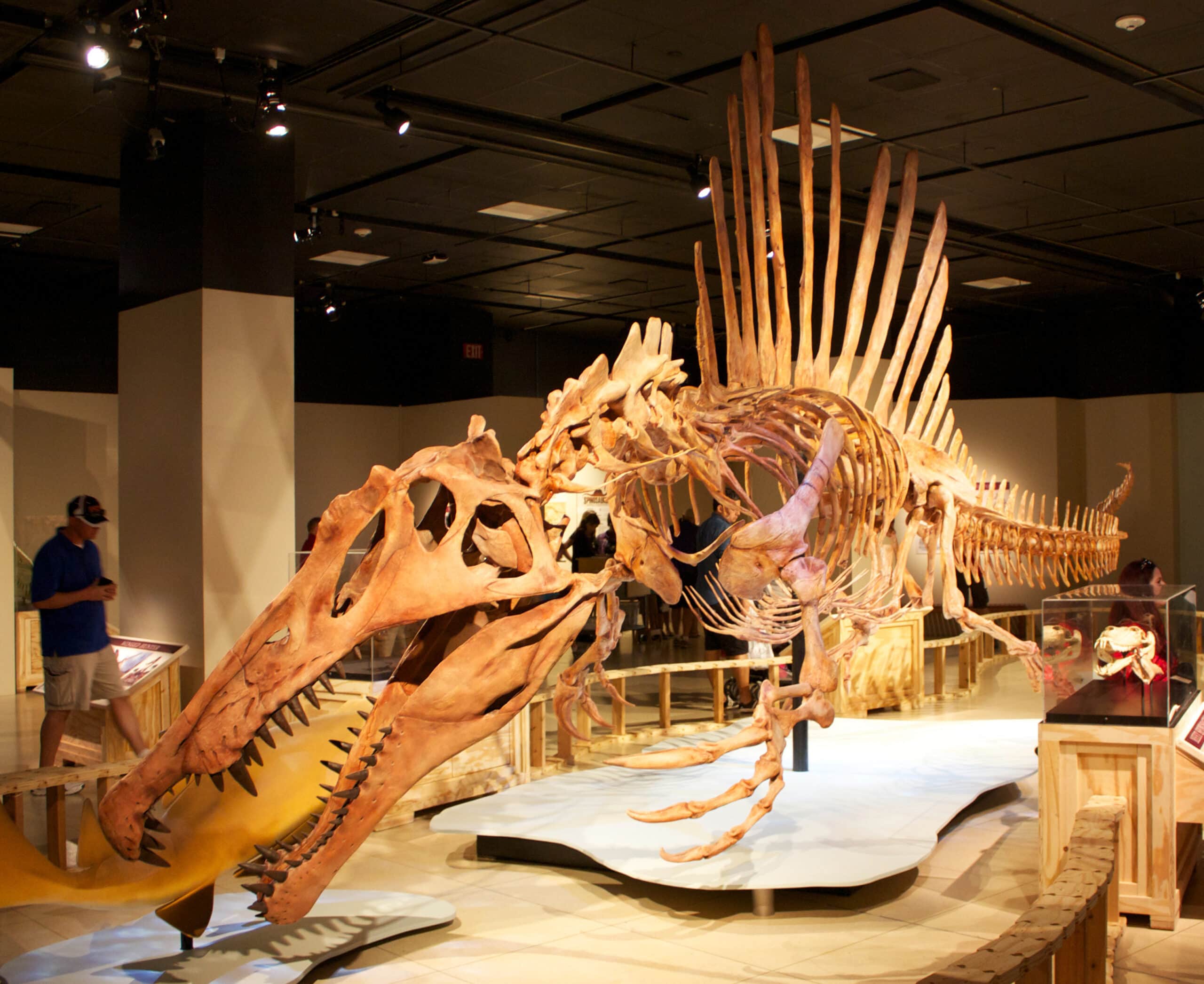 Source: commons.wikimedia.org
Source: commons.wikimedia.org
The largest carnivorous dinosaur is the Spinosaurus, with a body length of 59 feet (18 meters). This dinosaur’s best feature is its large spines that protrude from its back right down to its tail. It’s not as feared as the T.rex, but the Spinosaurus size should be more than enough to keep other dinosaurs from straying too close to it.
Aside from being a force to be reckoned with on the lad, the Spinosaurus also hunts prey on water. Scientists believe that it is a semi-aquatic dinosaur. It had high-density bones which would make it move swiftly through the water. Aside from that, the tail of the Spinosaurus is said to be paddle-like, so it had the ability to move fast through the water.
Did You Know
The Spinosaurus is called the Egyptian Spiny-Tailed Lizard because of its spines on the back and the fact that its fossils were found in Egypt.
RELATED READING
15 Largest Reptiles in the World
5 Largest Crocodiles in the World
6 Largest Alligators in the World
10 Oldest Dinosaurs Ever Discovered in the World
10 Rarest Dinosaurs Ever Discovered
